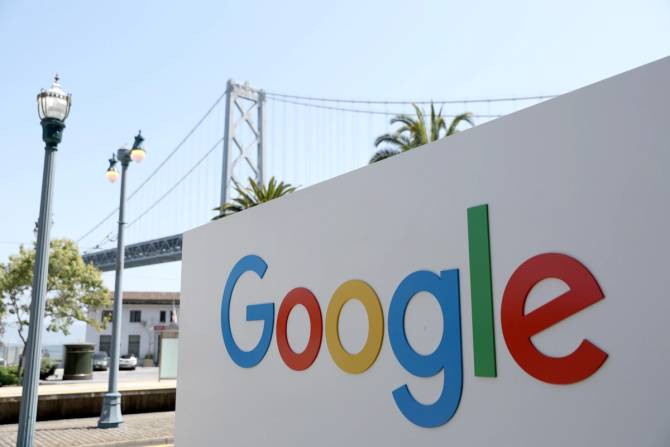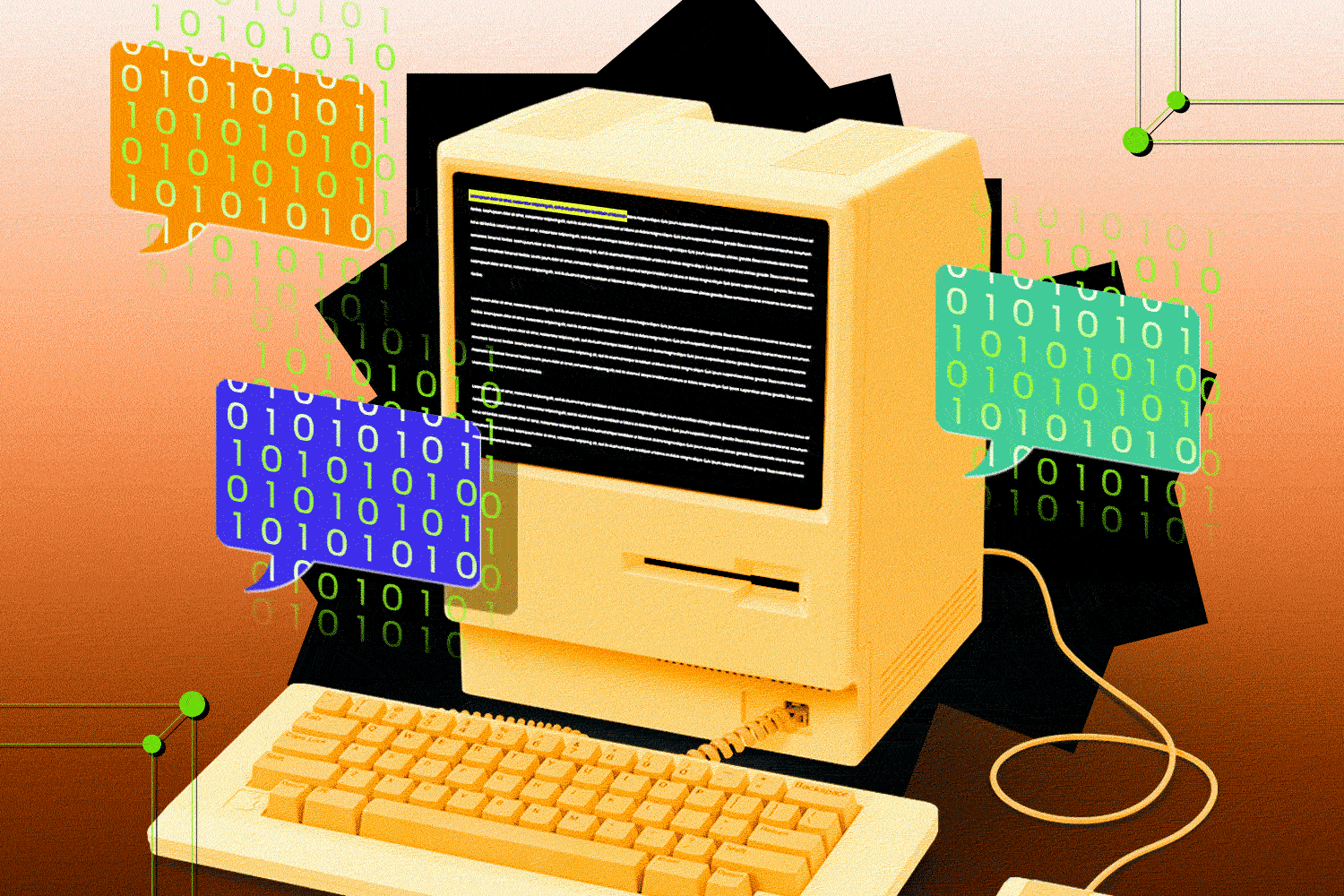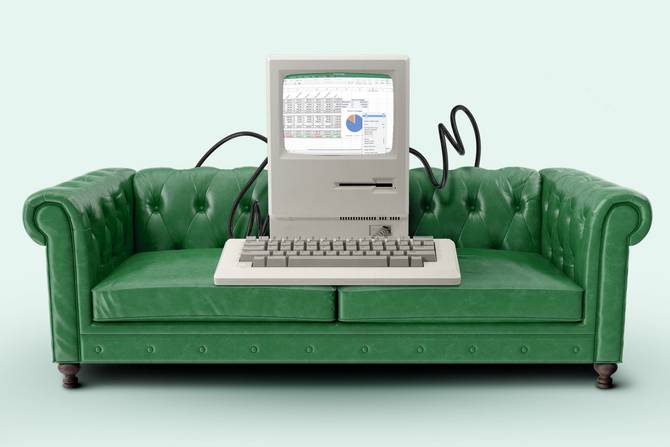Hello, HR Brewers. The Apollo 13 moon mission launched on this day 53 years ago, but had to return to Earth six days later due to a problem with the spacecraft’s oxygen tank. We, uhh, hope your day goes a little better than that.
In today’s edition:
 And you get a Chromebook And you get a Chromebook
 HR in the age of AI HR in the age of AI
 Coworking Coworking
—Aman Kidwai, Sam Blum, Adam DeRose
|
|
Justin Sullivan/Getty Images
Employees at Google are about to say goodbye to their overabundance of muffins and yoga classes. Though companies need to tighten the belt at times when it comes to expenses, some Big Tech companies seem to be taking more of a “corset” approach.
As part of a “multi-year” effort to reduce costs, Alphabet, the parent company of Google, is cutting back on spending for cafeterias, fitness classes, office supplies, and new laptops, according to reports. The Wall Street Journal wrote that the company plans to introduce a new procurement tool aimed at reducing spending with outside vendors.
“Just as we did in 2008, we’ll be looking at data to identify other areas of spending that aren’t as effective as they should be, or that don’t scale at our size,” Alphabet CFO Ruth Porat wrote in a company email viewed by WSJ.
The problem with the perk-cession. Jo-Ellen Pozner, an assistant professor of management at Santa Clara University’s Leavey School of Business, whose research focuses on questions of organizational ethics and corporate governance, told HR Brew that employees are not likely to respond well to these changes and that company culture may be impacted.
Alphabet’s most recent annual filing with the SEC reported over $164 billion in total current assets, including over $113 billion in cash on hand, and nearly $60 billion in net income. On an annual basis, company revenue increased from $182 billion in 2020, to $257 billion in 2021, and $282 billion in 2022.
“You do have to wonder, what are they saving the money for? What kind of bigger problem is coming down the pike if we need that much cash on hand, and why is it not being spent on us as employees? Those are questions that destroy trust and destroy the nature of the relationship that employees thought they had with the organization,” Pozner told HR Brew.
Cuts are trending. Going forward, employees outside of engineering requiring a new laptop will receive Chromebooks, a more affordable machine made by the company, whereas MacBooks were previously available, CNBC reported.
Keep reading.—AK
|
|
|
Mini-golf tournament lunches are a thing of the past (right?), but employers are still trying to deliver a rewarding employee experience. And if you’re a people leader, it should be a priority for you too.
So what does a positive employee experience actually look like? Turn to the pros at Workday for a crash course. Employees wanna feel connected to their company and its culture regardless of location. They also want to see their org invest in matters beyond revenue, like career development and social issues.
Take a peek at all the fundamentals and start developing a holistic, engaging employee experience with Workday’s Rethinking Employee Experience eBook. From strategy development to the real benefits of an elevated experience, this eBook’s got the scoop.
Get your free copy.
|
|
Francis Scialabba
Generative AI is coming for HR technology with the seeming inevitability of Jason Momoa coming for Henry Cavill on the red carpet. Though ChatGPT isn’t yet entrenched in the HR tech stack, teams have already consulted the tool for writing performance reviews, while some job applicants are using it as a kind of “calculator” for crafting résumés and cover letters. (ChatGPT was developed by Microsoft-backed OpenAI, and the initials stand for “generative pre-trained transformer.”)
HR pros will feel the most immediate impact of generative AI in recruiting, career development, and employee self-service, said Josh Bersin, HR tech analyst and founder and CEO of human capital advisory firm the Josh Bersin Company.
Recruiting. Generative AI combs through enormous amounts of data scattered across the web. With publicly available information about people’s job histories littering platforms such as LinkedIn, certain tools have ample fodder to find top recruits.
“If you’re a nurse, there’s a registry of all your nursing certifications, [likewise] if you’re a software engineer and you’ve uploaded your code to GitHub,” he explained. “There’s a lot of public information about people that’s not connected. But the AI can connect it and make sense of it.”
Among the tools to monitor are Beamery, SeekOut, and Eightfold AI, all of which have recently announced GPT interfaces. All three companies are developing tools that give “recruiters, HR managers, or hiring managers better information to recruit and match people more quickly,” Bersin said.
L&D and career mobility. If understanding your professional trajectory ever felt daunting, AI is there to light the path, Bersin said.
Keep reading.—SB
|
|
Angelette Boddie
Here’s another installment of our 1:1 with HR Brew’s readers. Want to be featured in an upcoming edition? Click here to introduce yourself.
Angelette Boddie’s work is her passion: professional development and adult education. A good curriculum helps learners draw lessons they can apply to their job, their broader career, or even their life outside of work, she said. The trick is to find the hard and soft skills trainees can develop that spark their own love of lifelong learning. Boddie’s career and her diverse professional experiences have taken her on an HR journey from cashier trainer at a now-defunct local discount store back in high school to designing leadership development courses at TCGplayer, a hobby gaming e-commerce and data management company, where she’s the senior manager of learning and development.
What’s the best change you’ve made at a place you’ve worked?
Implemented a six-month leadership development program. We have some self-serve content where they can do it through a third party. There’s what we call “cohort connections,” where the group within the program comes together and they talk about their experiences, they share best practices, they lean in and on each other…That happens over a four-month span, and then those last two months…[we use] our learning design model, which is to learn, practice, share, reflect, and refine, and using that model simply says, “Take what you’ve learned, and let’s now apply it. Let’s bump our heads a little bit. Let’s trip over and skin our knees a little bit, get a little bruised up, wipe our shoulders off, get up and try again.”
What’s the biggest misconception people might have about your job?
The true meaning of training. Training is an activity to improve competence, capacity, and performance on the job. Training is not an outcome or an end result; it’s the improvement of knowledge or expertise over time, aka mastery.
Keep reading.—AD
|
|
|
A little more AI conversation: When GM shifted from auto manufacturing to tech, their hiring process evolved to match. Paradox’s conversational software helped GM schedule more than 50,000 interviews globally in 2022—and save over $2m in recruiting costs. Check out Paradox’s webinar to learn how they made it happen.
|
|
Today’s top HR reads.
Stat: Only 37% of CEOs expect to expand their workforce over the next 12 months, down from 44% in Q4 2022—a less optimistic figure than the 42% of CHROs who expect an increase in hiring. (the Conference Board)
Quote: “It’s the employees who made us and they’re the ones who are going to continue to make us.”—Chip Bair, owner of Beau Jo’s, a pizza shop in Colorado, announcing his plans to sell his pizzeria to employees via a stock ownership plan (the Colorado Sun)
Read: When larger companies acquire smaller ones, the innovative people from the smaller company are thrust into environments that are often not conducive to generating and exploring new ideas. (the Wall Street Journal)
|
|
-
Dollar General has allegedly run afoul of workplace safety standards, again.
-
Tesla employees were reportedly sharing private customer video from the company’s cars amongst themselves.
-
New Jersey law has added protections for employees who are laid off.
-
Gen Z, for a variety of reasons, is not getting the best start in the world of work.
|
|
Catch up on the top HR Brew stories from the recent past:
|
|
|








